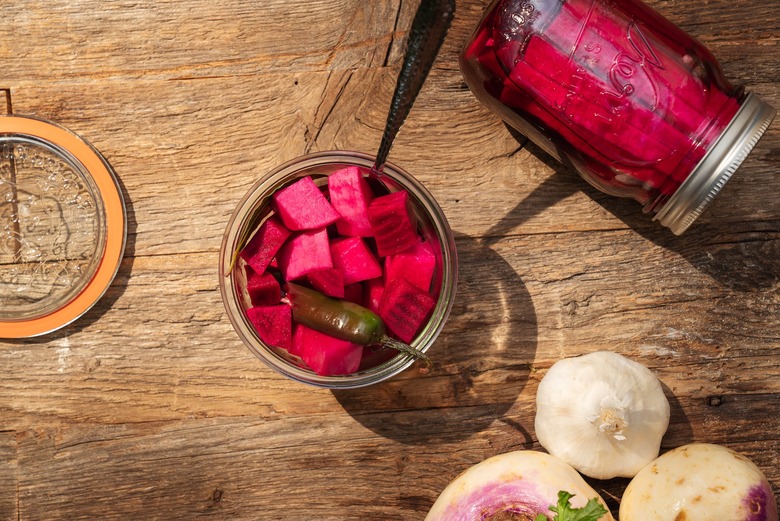Prep School: How To Pickle Just About Any Vegetable
Millennia before Louis Pasteur discovered the bacteria-killing process known as pasteurization; our ravenous forbears found that foods lasted longer if they were treated to various procedures. Before mechanical refrigeration and freezing were the norm for extending the shelf life of food, methods included drying, salting, cooling and, of course, pickling.
What the Western Hemisphere now knows as "pickling" is simply the submersion of raw food in an acidic and/or salty solution as a means of preservation. Even though we no longer need to pickle food to preserve it, we still do it because we love the way it tastes.
Before I go on, allow me to mention that the dill or bread-and-butter pickles most of us love on burgers and alongside sandwiches are made from cucumbers and have a distinctive sour taste. And it's that sour taste that — for me, at least — marks a pickle as originating from the Western Hemisphere.
But the West does not own the pickle. In fact, pickles of some sort are found in nearly every culture, whether it's heavily spiced, oil-soaked mangoes from India or spicy red cabbage and radish kimchi from the Korean Peninsula.
Because I am located in the heart of the American Midwest, I'll give you a method for producing that crisp cucumber pickle and its many country cousins. In addition to cukes, you can apply this method to any number of vegetables, like cauliflower or okra. Green beans make great pickles, and pickled jalapenos are one of life's piquant pleasures. Turnips are terrific, and when they're stained hot pink with the addition of fresh beets, they bring a bit of the Middle East to my Midwestern table (see recipe below).
One last thing before we get to a quick, Western-style pickle method: Many of your favorite pickles may be fermented — a slightly different and somewhat long process. Our method is just a simple brine, whose purpose is flavor as much as it is preservation. Its sour taste comes from vinegar rather than the acids produced by fermentation. As such, it can be ready in less than an hour.
How to Pickle Anything
Note: Several sources suggest that iodized salt will adversely affect the flavor and texture of pickles. However, a 1996 study conducted by the World Health Organization found no discernible difference in flavor or texture between pickles made with kosher salt (non-iodized) and those made with table salt (iodized).
Step 1: Assemble your brine mixture of water and vinegar, which can have a ratio anywhere from one-to-one to four-to-one. Always use a trusted recipe when you're first starting out. Bring the liquid to a boil to dissolve the salt — typically about 1 to 2 tablespoons per 2 cups of liquid.
Some recipes use sugar or another sweetener, and nearly all call for the addition of fresh or dried spices. Fresh dill and garlic are common, along with bay leaf and commercial pickling spice blends, which can include mustard seeds, dill seeds, allspice and peppercorns, among other spices. Add these to your brine.
Step 2: Place your peeled, trimmed and cut vegetables into clean jars and pour in the brine solution until the vegetables are completely submerged. Cover and let sit from an hour to a week, depending on the recipe. When the pickles are ready, they'll keep for up to a month in the fridge — if you can manage to make them last that long!
Middle Eastern Style Pickled Turnips Recipe
The flavor of these delicious and easy-to-make pickles is similar to western-style pickles, but the hot pink color from the beets identifies it immediately as being from the Middle East.
For the Middle Eastern Style Pickled Turnips recipe, click here.

